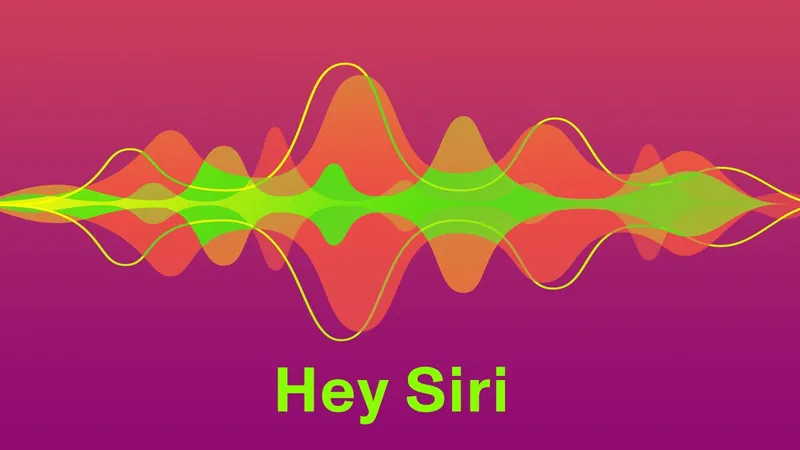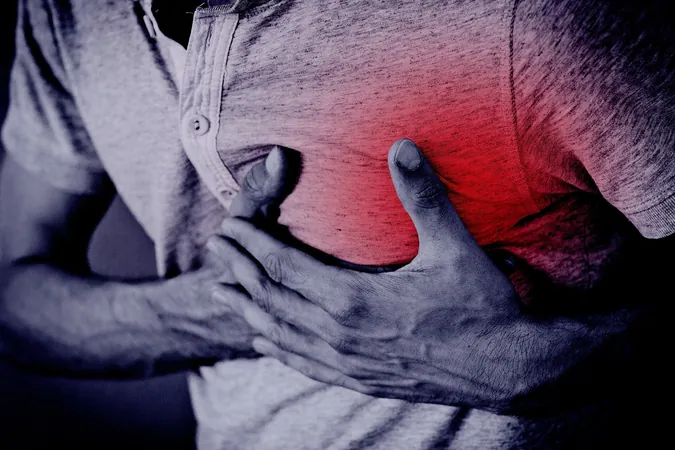
Shocking Revelation: One-Third of Mild COVID-19 Survivors Show Lung Damage a Year Later!
2025-01-27
Author: Wei
New research has unveiled a startling trend among recovered COVID-19 patients, revealing that nearly one-third may exhibit lung abnormalities on imaging tests a full year after battling mild cases of the virus. While medical protocols for treating acute COVID-19 have been well established, the long-term effects of this relentless virus are still shrouded in mystery, with “long COVID” emerging as a complex and multifaceted condition.
The long-term consequences of COVID-19 seem to extend far beyond typical respiratory issues. Ongoing studies are shedding light on a spectrum of post-infection effects, from psychological impacts such as increased fatigue and “brain fog” to a higher incidence of autoimmune disorders. But now, a growing body of research, including compelling evidence from a recent study, provides a clearer picture of how COVID-19 can irreparably harm the lungs, even in those who initially survived the disease with moderate symptoms.
In a comprehensive study conducted in northern China, researchers analyzed the cases of 103 patients diagnosed with COVID pneumonia during 2022, separating them into categories based on infection severity: moderate, severe, and critical. Low-dose CT scans were carried out upon diagnosis and again at three, six, and twelve months post-discharge. The findings were alarming—nearly 70% of patients displayed signs of lung abnormalities at one point during follow-up, with 10% showing evidence of fibrotic changes.
Interestingly, even among individuals with mild symptoms, over one-third continued to experience abnormal lung function after one year. This raises crucial questions about the extent of COVID-19’s impact, particularly in patients who may have underestimated their risk due to initially mild presentations. The research highlighted that older age (65 and above), extended hospital stays, and the extent of lung consolidation during the infection were significant predictive factors correlating with abnormal lung imaging one year later.
By the end of the follow-up period, a staggering 34% of participants were still grappling with lung issues, while 9% had been diagnosed with pulmonary fibrosis and restrictive ventilatory dysfunction—even in those categorized as having moderate infections. The study's authors stress the critical need for ongoing monitoring and evaluation of lung health in COVID-19 survivors, as certain fibrotic changes appear to stabilize after six months but can remain static or worsen over time.
They advocate for radiologists to pay close attention to initial imaging results, as baseline consolidation volumes could provide vital insights into which patients are at risk for long-term lung damage. This research underscores an urgent call to action for healthcare providers as they navigate the uncharted waters of post-COVID care.
With long COVID becoming an increasingly pressing health dilemma, understanding its implications—especially on respiratory health—is paramount. The findings from this study not only contribute to our knowledge of the virus’s long-term effects but also emphasize the necessity for targeted strategies to mitigate these risks moving forward.
Stay tuned for more updates as the health community continues to unravel the hidden impacts of COVID-19 on long-term health!




 Brasil (PT)
Brasil (PT)
 Canada (EN)
Canada (EN)
 Chile (ES)
Chile (ES)
 Česko (CS)
Česko (CS)
 대한민국 (KO)
대한민국 (KO)
 España (ES)
España (ES)
 France (FR)
France (FR)
 Hong Kong (EN)
Hong Kong (EN)
 Italia (IT)
Italia (IT)
 日本 (JA)
日本 (JA)
 Magyarország (HU)
Magyarország (HU)
 Norge (NO)
Norge (NO)
 Polska (PL)
Polska (PL)
 Schweiz (DE)
Schweiz (DE)
 Singapore (EN)
Singapore (EN)
 Sverige (SV)
Sverige (SV)
 Suomi (FI)
Suomi (FI)
 Türkiye (TR)
Türkiye (TR)